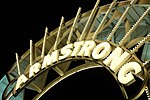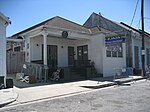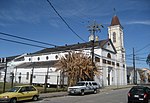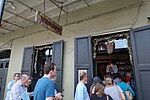MaMou (restaurant)
2022 establishments in LouisianaFrench restaurants in IllinoisLouisiana stubsRestaurants established in 2022Restaurants in New Orleans ... and 1 more
United States restaurant stubs

MaMou is a French restaurant in New Orleans, Louisiana. Established in November 2022, the business was included in The New York Times's 2023 list of the 50 best restaurants in the United States.
Excerpt from the Wikipedia article MaMou (restaurant) (License: CC BY-SA 3.0, Authors, Images).MaMou (restaurant)
North Rampart Street, New Orleans French Quarter
Geographical coordinates (GPS) Address Nearby Places Show on map
Geographical coordinates (GPS)
| Latitude | Longitude |
|---|---|
| N 29.962777777778 ° | E -90.066111111111 ° |
Address
North Rampart Street 942
70116 New Orleans, French Quarter
Louisiana, United States
Open on Google Maps










